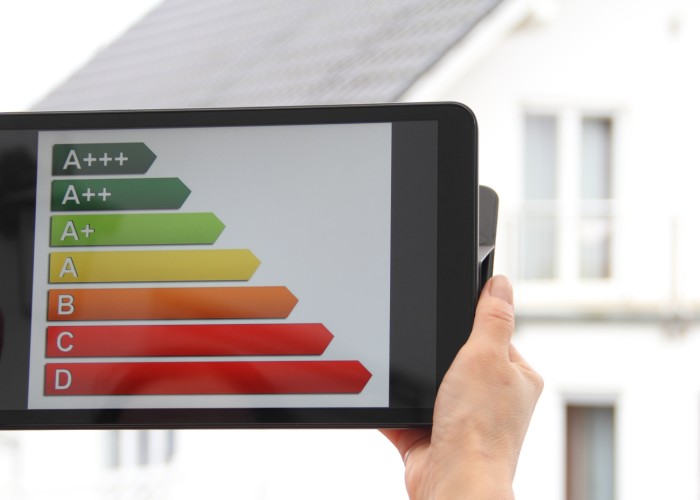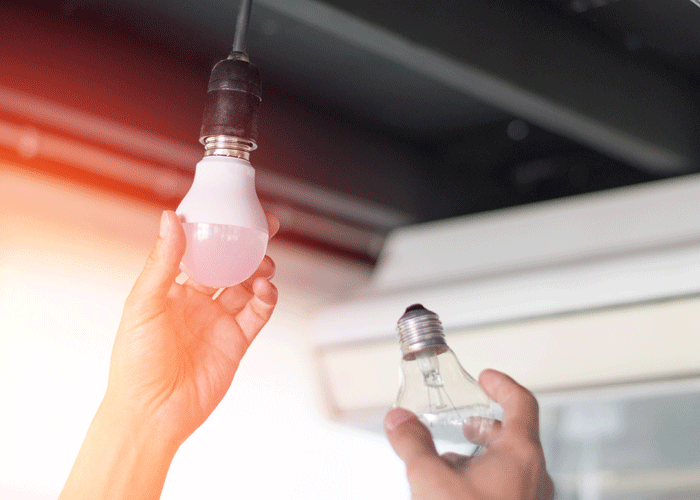With targets in place for the UK to be Net Zero by 2050, Government, businesses, and individuals all have a part to play in reaching these goals. Households are big emitters of greenhouse gases, accounting for 26% of total emissions in the UK on a residency basis.

With targets also in place to improve EPC ratings of the UK’s property stock, there are considerable developments to be made to achieve this, with one in six adults (17%) wanting to make improvements to the EPC rating of their property, according to research from Mortgage Advice Bureau. Brian Murphy, Head of Lending at Mortgage Advice Bureau, shares 5 key steps homeowners can follow to lower a household’s carbon footprint.
1. Evaluate your energy consumption
Monitoring your current energy consumption will help you understand how much your household uses and how to bring it down. A smart meter is a great place to start on your journey to reducing your overall footprint as it tracks exactly how much energy you use each day and is something your supplier can install free of charge. To get an even better idea of where you might be wasting energy without realising it, you could invest in an energy audit. They cost between £100-400 and will highlight opportunities specific to your home where energy efficiency can be improved.
2. Try quick energy saving hacks
Quick and easy improvements can help in the shorter term and may save you some money in the short term too. This may include such things as having radiator systems cleaned to maximise their efficiency, switching to longer lasting LED lights where suitable, choosing appliances with a high efficiency rating, and lowering the temperature of your water heater if you find that it is above the recommended 48⁰.

Small changes can make a big difference! There are of course other home improvements that can be made which may be considered a longer-term investment, such as installing a heat pump or solar panels. Just over one in ten adults want to add solar panels to their home, and although making these changes may seem costly in the initial sense, they will bring you savings in the long term.
3. Reduce water usage
Using less water is strongly linked to reduced carbon emissions. There are many straightforward ways to achieve this. For example, a tap aerator is a low-cost gadget that restricts the number of litres of water that flow from the tap per minute. An eco-shower head can do the same thing, but for your shower instead.
4. Consider taking out a green mortgage
A mortgage is one of the biggest monthly payments you’ll make, and with lenders now offering green mortgages, they can also play a part in building your Net Zero credentials. A green mortgage rewards you for buying or owning an energy efficient home.

Several different types exist, but the one thing they have in common is that they’re only available to those who either buy or own an environmentally friendly home (generally with an A, B, or C EPC rating), or make energy-efficient home improvements. Some products will offer preferential rates to standard mortgages if the property meets certain energy efficiency criteria, whereas others may offer cashback on any money you borrow to upgrade your home’s energy efficiency.
5. Draught-proof the home
A lack of effective insulation or windows in need of new seals could be more of a drain on your energy efficiency than you may realise – the more that heat is able to escape your home, the more energy required to keep it nice and warm! If you live in an older property, particularly if it was built before 1990, it’s likely to be draughtier, so it’s certainly worth making sure your home is well insulated. New windows or double glazing are a popular choice for those looking to improve the energy efficiency of their home, with nearly one in six adults intending to introduce these, according to our research. Choosing insulation from recycled materials will also have an impact towards reaching the Net Zero goal.




